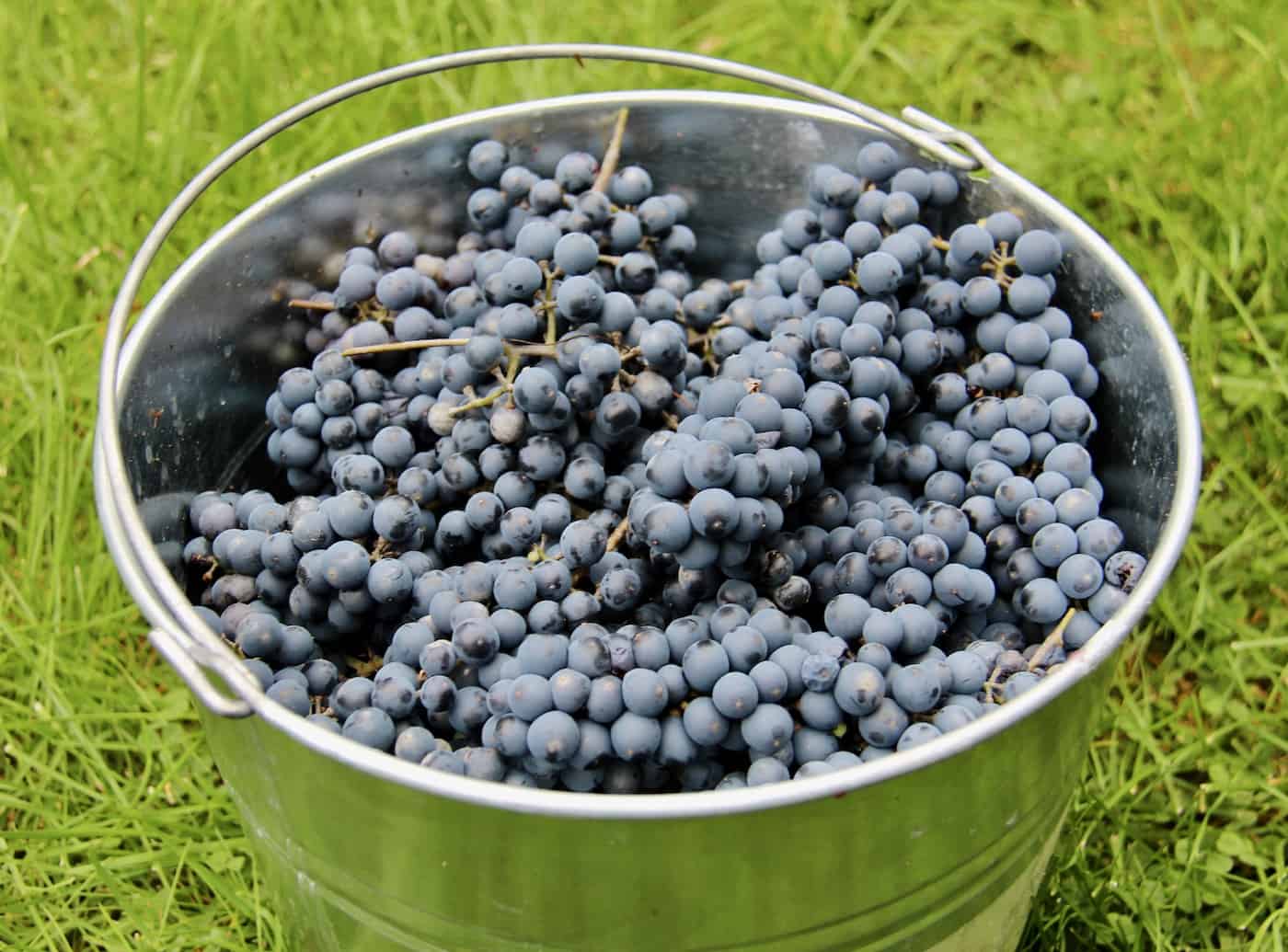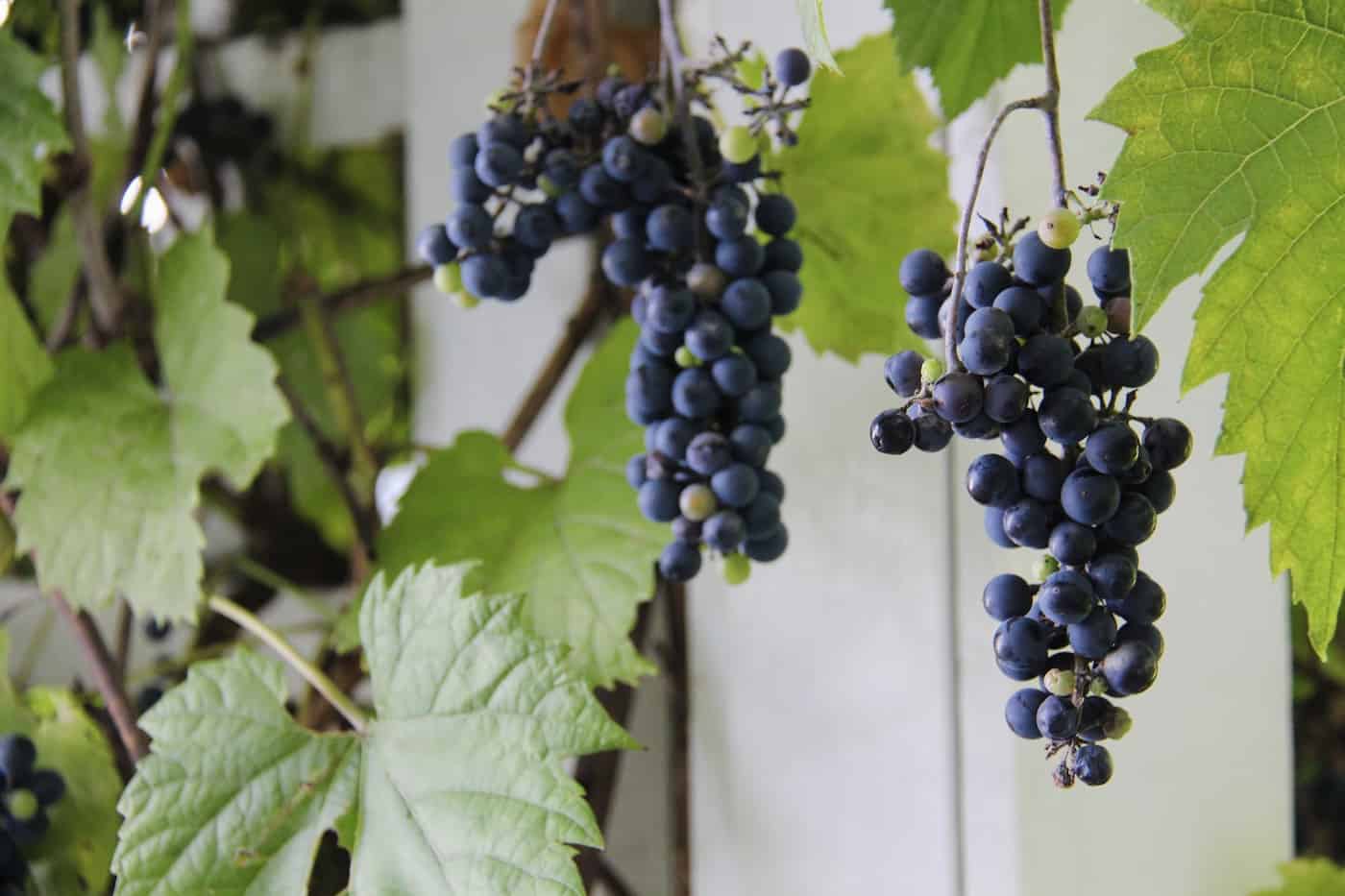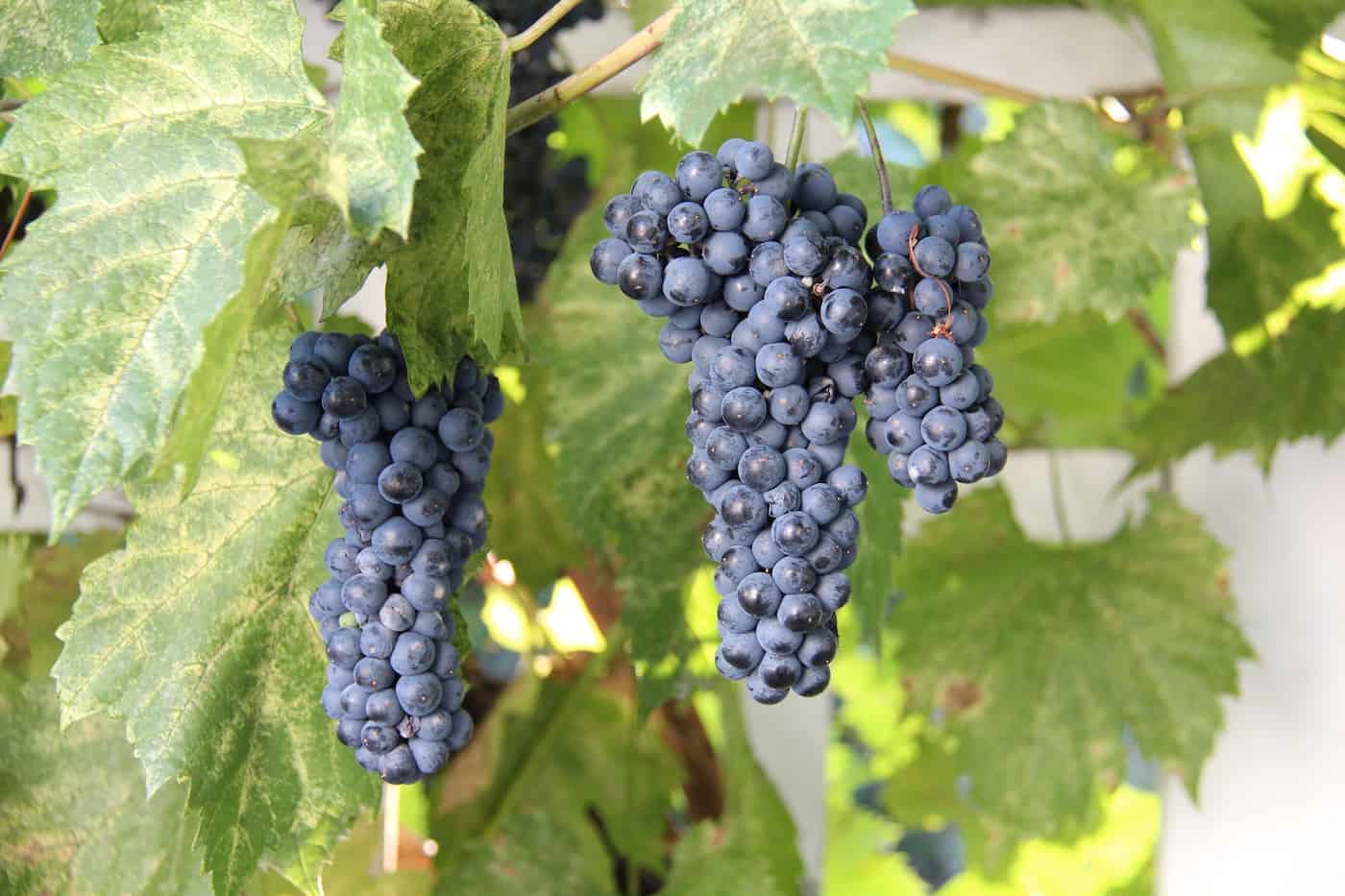To grow Concord grapes, start with a healthy young plant. They aren’t too picky about soil type, but should be planted in a full sun location for best results. You’ll also want to build a support for the vine, like a post-and-wire structure, an overhead trellis, or a pergola.
Keep the plant well-watered for the first year or two. Prune the vine hard each year in early spring. Concord grapes are considered easy to grow but are somewhat prone to fungal disease.

A guide to growing Concord grapes
The Concord grape (Vitis labrusca) is a classic American variety of grape with a great flavor. Concord grapes are delicious eaten out of hand, but they also make excellent juice and jelly.
Growing Concord grapes at home is easy enough that even the newest gardener can do it with a little bit of knowledge. Before you plant your vine, choose an area that has plenty of direct sunlight and good air circulation. Keep in mind that Concord grapes can reach up to 10 feet tall, so make sure you place your vine somewhere where it won’t interfere with other plants or structures.
For the best growing conditions, prepare a soil that is well-drained. To help your vine establish a strong root system, mix plenty of well-rotted manure or compost into the top 6-8 inches of soil. That said, grapes are very tolerant of poor soil.
Once planted, Concord grapes need regular watering and pruning in order to flourish. They are also susceptible to fungal diseases, like powdery mildew and black rot. To help prevent disease, be sure to keep your vines pruned hard with plenty of airflow around them.
Finally, Concord grapes need a good support structure in order to grow properly. A post-and-wire structure or an overhead trellis/pergola work best.
Prized for its versatility, Concord grapes have been used to make a variety of treats jelly, pies, and candy. It’s also widely incorporated in wine-making practices due to its unique flavor profile – which has made it a popular choice for wine for religious ceremonies. They are not typically used to make raisins because they have seeds. The grape was developed in the town of Concord located in the state of Massachusetts.
Planting a Concord grape vine
To plant your grape vine, you will need to follow these steps:
- Choose a location for your grape vine that gets at least 6 hours of sunlight per day and has well-draining soil. Avoid planting in low-lying areas where frost is likely to settle.
- Prepare the soil by loosening it to a depth of about 18 inches and adding compost or well-rotted manure to improve fertility.
- Dig a hole that is wide enough to accommodate the root ball of your grape vine. The hole should be deep enough so that the crown of the plant (where the roots meet the stem) is just slightly above the soil line.
- Place the grape vine in the hole and spread out the roots. Cover the roots with soil, gently tamping it down to remove any air pockets.
- Water the grape vine well to help settle the soil and get the plant off to a good start.
- Prune the grape vine as necessary to shape it and encourage healthy growth.
- Pull out any weeds around the base of the plant so it does not have to compete for resources with them.

Building a trellis for a Concord grape vine
Concord grape plants get quite large and heavy and need a proper support. This can be a pair of posts on either side of the vine with wires between them, or you can train the vine up a vertical wooden trellis or even up the side of an overhead pergola.
How to build a post and wire freestanding trellis
1. Start by driving two 4- to 6-foot posts into the ground on either side of your grape vine. Make sure they are secure and firmly planted. Posts are usually placed about 3 feet away from the base of the vine on either side (in a line). If you’re planting multiple plants, plant them about 6 feet apart.
2. Use heavy wire or cable between the two posts. You can buy “Grape wire” at farm supply stores, which works best. Tie one wire horizontally between the posts at about 3 feet above the ground and other at 6 feet above the ground (unless you’d like a shorter overall plant for easier harvesting).
3. Tie the growing shoots of your grape vine to the wire as they grow.
Training young Concord grape vines
Young plants are generally trained pruned as “canes” or as “spurs”. For cane pruning, the grower chooses 2-4 vertical stems that come up from a stubby low trunk, and removes all the others. For spur pruning, the grower leaves two horizontal branches on each side and leaves little stubs growing off of these four main horizontal branches.
Fertilizing Concord grape plants
Grapes usually don’t require much fertilizer for the first few years, especially if the soil is nutrient-rich and the weeds are kept under control. Once the plants start fruiting reliably, a complete fertilizer is uaully applied in the spring. Growers usually use a product with an NPK formula in which the P value is greater than the N value (nitrogen).

Pests of Concord grapes
Concord grape plants have a few pests. One of the most common is the leafhopper.
There is a specific type of leafhopper that targets grapes – the grape leafhopper. These little bugs look like small white fruit flies. They are an off-white color and don’t fly very well (they “hop”, as the name suggests). They hang out on the bottom of the leaves where they feed on the plant’s leaves and buzz around the ripening fruit. Other leafhoppers like rose leafhopper can also feed on grapes. Other pests include aphids, spider mites, and Japanese beetles.
Be sure to keep an eye out for signs of infestation and take the necessary steps to protect your plants. You can usually spray them off with organic products such as Safer’s 3-in-1 spray or Trounce. A better preventative measure is to use a lime sulfur spray in combination with a dormant horticultural oil spray in late winter.
Birds can also be a pest as they feed on ripening grapes. The way to protect against this is by hanging netting over your ripening grape bunches or bagging each bunch with a mesh bag.
Common grape diseases
Common disease of grape plants include powdery mildew, botrytis bunch rot, black rot, and downy mildew.
Powdery mildew is a fungal disease that appears on the foliage as white, powdery patches which can spread to growing shoots and cause them to die. Powdery mildew can be somewhat prevented by spraying with dormant oil and lime sulfur in late winter after the plant has been pruned.
The best time for treatment is early – as the buds are swelling in early spring. Copper sprays can be used on the leaves as they grow. Don’t spray the plant within a month of harvest (even with these natural options). And keep the leaves as dry as possible otherwise (no overhead irrigation).
Botrytis bunch rot is a fungus that attacks the berries of grapvines as they ripen and causes them to become mushy and rotten. It can be prevented by good air circulation around the growing plants and removing any infected berries as soon as you notice them.
Black rot is a fungus that can attack growing leaves and stems resulting in spotty, discolored patches. Again, keep your grapevines as dry as possible and treat with organic fungicides such as copper or sulfur sprays.
Downy mildew is a fungus that appears on growing grapes as small yellow spots which later become black and fuzzy in appearance. The best way to prevent this disease is by planting resistant varieties of grapes, ensuring good air circulation around the growing plants and treating with organic fungicides such as sulfur or copper sprays.








